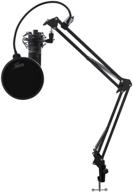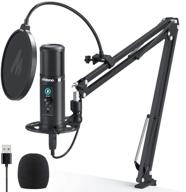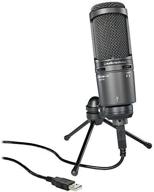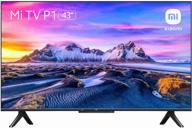
Review on 🎤 Innopow 80-Channel Dual UHF Wireless Microphone System | Metal Cordless Mic Set | Long Distance Range 200-240Ft | 16 Hours Continuous Use for Family Party, Church, Karaoke Night | WM-333 by George Woods

Really impressed [Pro review]
First of all I have a degree in audio engineering and have been DJing, radio and clubs/festivals for over 15 years. I've used the best systems and have had many wired/wireless mic setups. My experience with these mics consists of just two events and extensive testing at home before taking them on tour. I prefer these mics to my previous $400 Sennheiser XSW 2-835-A and current $300 Shire BLX24/PG58 for build quality, sound quality, features and reception. I would like to test a year after many other gigs and rentals before determining their long term reliability but at the price it is now.... IMPRESSIVE! My initial testing was done in a large room where I had line of sight (290 feet) (measured) and could walk with broken line of sight on brick walls in hallways and outside. I wish I had a GoPro for my testing so I can upload my results but you have to trust me. I don't want to bore you with too many details, but here are a few really important ones. First, the first weak receiving point was only 150 feet from the receiver where I was outside the building on the other side of a brick wall, and even then there was only a slight hiss in the signal for another 50 feet (200 feet). ), and the microphone sometimes lost a bit and became unusable in a situation like a mobile DJ, in my opinion. Even more impressive is the line-of-sight when I don't pick up on a slight hiss (very quiet) until 240-250 feet, *manufacturer's spec power, though I was able to get to a full 290 feet of room with very little random dropouts and noticeable fluff, and it was with my hand covering the entire bottom of the microphone (transmitter) and standing away from the receiving station. Even with the IR on the mic not pointed at the receiver, as you should when setting up a link between the transmitter and receiver, I've found that at 250 feet away, after power cycling the mics, they instantly reconnect with no issues associate. The multifunctional power button on the bottom of the microphone offers a great click feel and is a smart place to hide "mute" so it's not accidentally pressed. Backlit screen (turns off after a short period of inactivity) with group, channel, frequency and battery status information. The cardioid pickup pattern is narrower than most and closer to a supercardioid microphone. The rear deflection is fantastic. The frequency response is livelier and warmer than many $500 mics and will do better or worse depending on the user. It also appears to be as reliable as the most expensive mics in the game. Would I trust him with 1,000 people at an event for one of my production companies? Yes, I already have. Time will tell the reliability and robustness of this setup, which is the most important thing when it comes to professional audio applications. This will more than meet your needs if you just want a good karaoke mic or have small private functions. For big events and gigs, I recommend having a second mic (like any branded mic) as a backup. I hope this helps you with your next microphone purchase. [UPDATE April 30, 2019] These guys have been on the job about 15 times. Last weekend MC Butterfingers dropped his mic while walking around. The microphone has no noticeable dents or scuffs and still works like clockwork. It still doesn't have the reputation of the SM58 but I think it gave me a little more confidence for the gigs to come. In fact, I just bought a second pair for my rental unit.
- Wide range
- Too dumb
New products
Comments (0)
Top products in 🎤 Microphones

Audio-Technica AT2020USB+ Condenser Microphone Bundle with 🎙️ Knox Gear Shock Mount, Boom Arm, and Pop Filter

22 Review

Professional USB Microphone with Zero Latency Monitoring - MAONO AU-PM422: 192KHZ/24BIT Cardioid Condenser Mic with Touch Mute Button and Mic Gain Knob for Recording, Podcasting, Gaming, YouTube

19 Review

Enhanced Performance: Audio-Technica AT2020USB+ Cardioid Condenser USB Microphone (Renewed)

19 Review

Revolutionize Your Sound with the Blue 1967 Yeti Pro USB Condenser Microphone, Multipattern

20 Review






